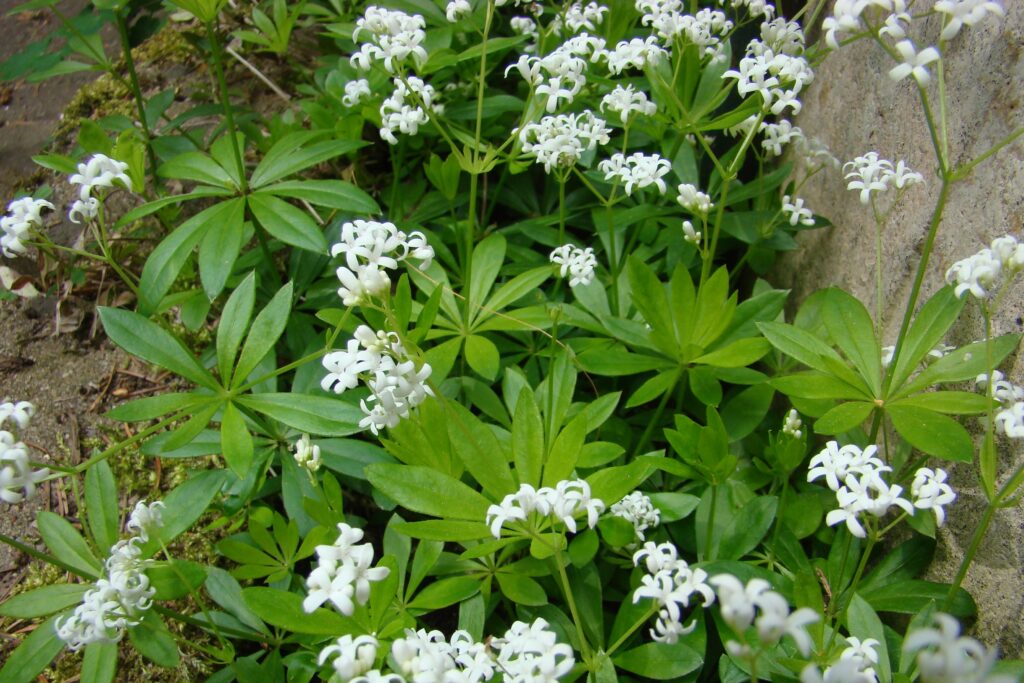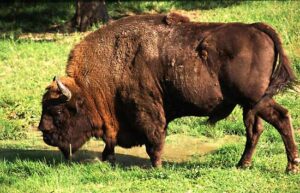Coumarin – A Pleasant Plant Poison
This is a story about our love affair with coumarin, a chemical produced by many members of the plant kingdom. The sweet, enticing odor of coumarin sort of resembles that of vanilla, but the flavor is slightly bitter.
Coumarin was used in a line of French perfumes about two hundred years ago, a useful odorant when nobility bathed once a week — the peasants noticeably less — and horses were a major source of traction in crowded cities.
Even longer ago, Germans brewed Maywine (Maiwein) by including the little herb sweet woodruff in its preparation — the “sweet” referring to the herb’s odor from its coumarin content. According to German lore, Maywine is good for people prone to blood clots. I used to grow a patch of sweet woodruff under one of our apple trees and made Maywine a few times. It was an easy wine to make because the pleasant odor and slightly bitter flavor masked my amateur winemaking skills. One year, our children and chickens got to our white grapes before I did, so I substituted apples for the grapes and produced an acceptable cidery Maywine.
Native Americans appreciated coumarin well before the European invasion. Sweetgrass was woven into long braids, partially dried, and burned as incense, especially in ceremonies and sometimes just to make the lodge smell better. Sweetgrass was also woven into baskets that smelled nice for decades. The Sweetgrass Hills of northernmost Montana were a popular place to gather this coumarin-laced grass, and Native Americans still harvest it in that area.
Sweetgrass distribution is circumboreal, and is also native to northern Eurasia. Once on a field trip in North Dakota, I was trudging along in the rain with a Polish scientist, comparing notes between our native prairie bison and his forest wisent, who are close cousins. He motioned me to sit down beside him on a large rock and opened his pack, producing a bottle of vodka containing sweetgrass, which he called “zubrowka.” So, we drank a little toast to the wisent, the bison and the sweetgrass. Zubrowka!
The European legume, sweet clover, is heavily laced with coumarin and was brought early to the colonies. If animals eat too much of it, they develop internal bleeding because coumarin is a blood-thinner. When sweet clover is included in silage, and if it turns moldy, several species of fungi convert the coumarin into dicoumerol, an even more potent blood-thinner, which easily kills livestock.
The connections between coumarin and mammals blood were not lost on the medical and industrial communities. It was extracted from plants and isolated as a pure chemical 200 years ago, and chemists quickly learned to synthesize it from other common chemicals.
Natural chemicals cannot be patented, so DuPont created a family of sister molecules that have about the same effects as coumarin. The medical grade blood-thinner — generic name warfarin and brand name Coumadin — has been widely used as a blood-thinner and stroke preventer for decades.
Laboratory tests showed that rodents are especially vulnerable to blood-thinners when they are included in grain baits, so industrial-strength blends of warfarin have also been marketed for decades as rat poison. See my book review blog “Rat Island” on the use of second-generation coumarin-type rat poisons in rehabilitating the native faunas of islands overrun by rats.
Incidentally, considerable caution is warranted regarding casual consumption of coumarin, whether “natural” or synthetic. Genuine zubrowka has been illegal to import for about 40 years, although a vanilla-flavored knockoff may still be available. Homemade Maywine has also sent imbibers to the emergency room. People already on blood-thinners should definitely avoid ingesting coumarin in any of its forms without getting specific clearance from their cardiologist.
Tags: coumarin, Lon Drake, medicinal plants, sweet clover, sweet woodruff, sweetgrass



